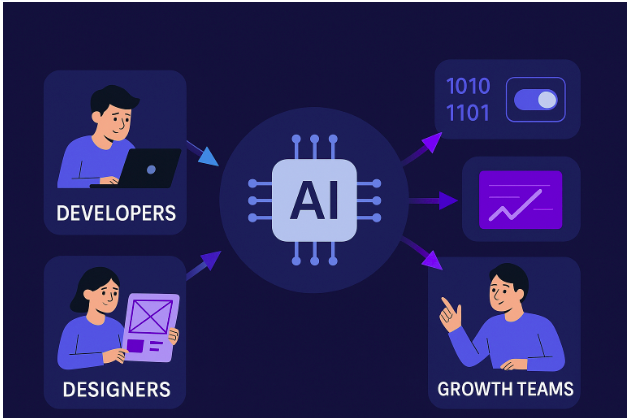In today’s digital world, the way we build digital products and services is undergoing a big transformation. From idea to production, everything is moving faster, and smarter. With the rise of automated processes, artificial intelligence (AI), cloud-native technologies, and serverless infrastructure, a lot of builders, and teams are no longer asking if they should adopt intelligent or automated systems, but rather how fast they can make the shift, because it is quite obvious that these changes in the digital world is here to stay..
Welcome to the era of the AI-native backend, where infrastructure doesn’t just serve your code; it helps shape, optimize, evolve it, and makes you as more efficient as possible. And at Aortem, we’re building that future.
What Is An AI-Native Backend?
An AI-native backend is not just about plugging in some machine learning APIs’ or something. It’s about integrating AI deeply into the backend workflow and process, from writing code to managing releases, automated QA processes, automated documentation, publications, scaling features, and even responding to user behavior in real time.
Think of a system where:
1. Releases are automatically versioned and published based on semantic changes.
2. Feature flags intelligently decide when to roll out, rollback, or A/B test.
3. Your infrastructure suggests improvements to your deployment strategy.
4. Designers, developers, and marketers all collaborate on the same system, without context switching.
The Global Shift Is Underway
The biggest players in tech, from GitHub Copilot to Vercel AI and AWS Bedrock, are pushing AI into every layer of the development stack. But backend tooling has remained quite fragmented and complex.
We believe that’s about to change because AI-native backends will:
1. Reduce cognitive load for teams
2. Accelerate release velocity
3. Eliminate silos between departments
4. Drive consistent, scalable product experiences
The world doesn’t just need another backend framework. It needs a smarter backend movement, and Aortem is leading that charge.
Why This Matters for Developers
For engineers, backend complexity is increasing. AI-native systems like DartCode AI are changing the game by automating:
1. Release management using tools like Semantic Release and Melos.
2. Test coverage monitoring with integrations like Codecov and Coveralls.
3. Error prevention through smart dependency tracking and changelog generation.
With tools like DartStream and DartCloudFunctions, developers can ship modular, serverless, Dart-based backends with minimal configuration. Add IntelliToggle, and you get instant control over what goes live, all integrated, all intelligent.
The result? Less boilerplate. More velocity. Fewer mistakes.
What It Means for Designers
Designers are increasingly involved in product delivery, not just ideation. AI-native backends empower them by:
1. Ensuring design-token consistency across frontend and backend.
2. Allowing real-time UX testing using feature flags controlled in IntelliToggle.
3. Reducing reliance on devs for UI logic validation, since toggles can simulate multiple states instantly.
When design systems are integrated into your backend logic, maintaining brand consistency becomes effortless, especially across multi-platform products like DartStream Open Source, Aortem SaaS, and beyond.
How Growth Teams Benefit
Marketing and growth teams thrive on speed, data, and control, and traditional backend systems often slow them down.
With an AI-native stack:
1. Feature launches can be targeted and staged with feature flags.
2. A/B experiments can be triggered without needing a new deployment.
3. AI can recommend which features to roll out to which cohorts, based on usage or engagement signals.
This means faster GTM execution, safer experimentation, and real feedback — all without waiting on engineers to push changes.
Conclusion
If your backend still requires manual releases, guesswork experiments, and disconnected workflows, it’s holding you back.
AI-native backends are here. The question is: are you ready to build with them?
